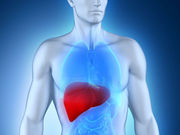Treating HCV before liver transplant increased life expectancy if MELD was ≤27
TUESDAY, Nov. 29, 2016 (HealthDay News) — For hepatitis C virus (HCV) patients with decompensated cirrhosis who are eligible for liver transplant (LT), the optimal model for end-stage liver disease (MELD) threshold below which they should receive HCV treatment is 23 to 27, according to a study published online Nov. 5 in Hepatology.
Jagpreet Chhatwal, Ph.D., from Massachusetts General Hospital in Boston, and colleagues simulated a virtual trial comparing long-term outcomes of pre- versus post-LT HCV treatment with oral direct-acting antivirals (DAAs) for patients with MELD scores between 10 and 40. A Markov-based microsimulation model was developed that simulated the life course of patients on the transplant waiting list and after LT. Data were integrated from recent trials of oral DAAs, United Network for Organ Sharing (UNOS), and other studies.
The researchers found that treating HCV before LT increased life expectancy if MELD was ≤27, but could decrease life expectancy at higher MELD scores, at the national level. The threshold MELD score to treat HCV pre-LT varied from 23 to 27 depending on the UNOS region, with lower thresholds in regions 3, 10, and 11, and higher thresholds in regions 1, 2, 4, 5, 8, and 9. The thresholds were stable in sensitivity analyses.
“Our findings suggest that the optimal MELD threshold below which decompensated cirrhotic patients should receive HCV treatment while awaiting LT is between 23 to 27, depending on the UNOS region,” the authors write.
Full Text (subscription or payment may be required)
Copyright © 2016 HealthDay. All rights reserved.








